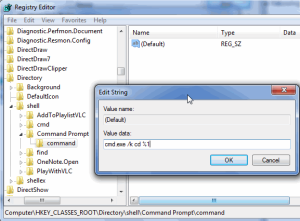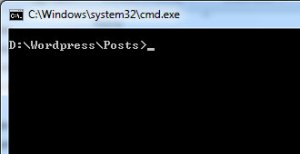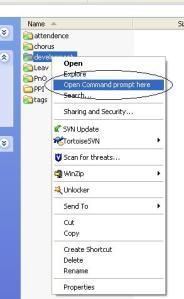 Adding some extra features in the right click menu is a good practice to ease your work and save the time. You can add several items like Command prompt, Copy the contents to clipboard, CopyTo, MoveTo in your right click context menu in Windows7. These additions obviously will benefit you by saving your time. Let’s discuss about the methods one by one. All the methods described in this article are based on registry editing. So back up your registry before editing and keep yourself on the safe side.
Adding some extra features in the right click menu is a good practice to ease your work and save the time. You can add several items like Command prompt, Copy the contents to clipboard, CopyTo, MoveTo in your right click context menu in Windows7. These additions obviously will benefit you by saving your time. Let’s discuss about the methods one by one. All the methods described in this article are based on registry editing. So back up your registry before editing and keep yourself on the safe side.
Add “Open Command Prompt in This Folder” option
When you work in Command Prompt, many time you need to change the directory and generally you use the command “cd directory path”. If the file is in the deep of your hard disk then repeating the task to change any directory is quite boring. You can add an entry in the right click menu by which you can open the command prompt directly in the folder, just right clicking on it. Here is the simple registry tweak.
Press Windows key + R. Type “regedit” to open the registry.
Navigate to HKEY_CLASSES_ROOT\Directory\shell in the registry editor.
Create a new key under “shell” and name it “Command Prompt”.
In the right pane modify the value of “Default” by right clicking on it and then “Modify“. In the “Value data” field write “Command Prompt here”.
Similarly create another new key under the key “Command Prompt’ and name it as “command“.
Select the new key you’ve just created and modify “Default” similarly and put the following code in the “Value data” field.
cmd.exe /k cd %1
Now close your registry editor and right click on any folder. You should see the “Command Prompt here” option.
After choosing the option the command prompt will appear with the file path pointing to that folder.
You Can read another method of doing this on Add Command Prompt to right click menu in Windows Explorer Which I wrote and tested on windows XP.






